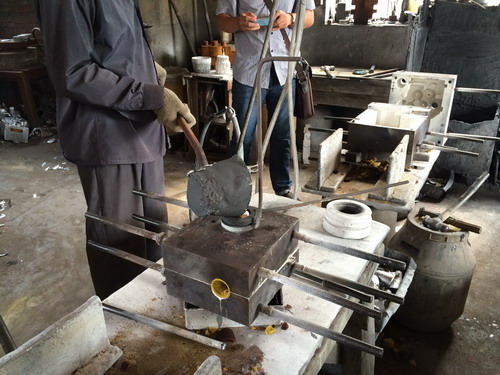A Guide to Permanent Mold Casting
Permanent mold casting, also known as chill casting, is a metal casting process that uses reusable molds made from steel or iron. In this process, the molds, unlike those used in sand casting, can be used repeatedly, making it ideal for mass production and projects requiring multiple duplicates. While more expensive than sand casting, permanent mold casting is considered a cost-effective method for part replication in major industries due to its durability and high-quality surface finish. In our factory, we employ two types of permanent mold casting processes to suit various production needs.
Applications and Advantages
Permanent mold casting is commonly used in projects that involve mass production, where consistent part duplication is required. While it has higher initial costs compared to sand casting due to the expensive steel or iron molds, it offers better surface finishes and more durability. However, compared to high-pressure die casting, permanent mold casting tooling is less expensive, making it a middle-ground option between the two.
Mold Construction
The molds used in permanent mold casting are usually made from steel or iron, making them more durable and long-lasting than sand casting molds. The process typically involves a two-piece mold, which fits snugly together with an opening at the top for molten metal to be poured in. Once the metal cools and solidifies, the mold is opened, and the cast part is retrieved for finishing.
For more complex casting designs, slits or cores might be added to the mold. Cores are installed into the mold to create hollow sections or intricate shapes in the final product. After casting, the cores are removed to retrieve the final piece.
Process Overview
The first step in permanent mold casting is to preheat the mold. Preheating eliminates moisture and ensures the molten metal doesn't cool too quickly when it is poured into the mold. This step is crucial because it prevents damage to the mold due to thermal expansion and ensures a consistent casting result.
The most common method for introducing molten metal into the mold is gravity casting, where the metal is simply poured into the heated mold. This method is cost-effective because it requires minimal equipment, but it may not be suitable for more intricate designs where the molten metal needs to fill fine details.
For more complex castings, methods like vacuum or pressure assistance can be used to help the molten metal flow into every part of the mold. This is known as the low-pressure die casting process and is particularly useful when the mold has intricate details that require a more controlled filling process.
Conclusion
Permanent mold casting offers a durable and efficient solution for mass production in a variety of industries. While the initial cost of the mold may be higher than sand casting, the durability, superior surface finish, and long-term cost-effectiveness make it a preferred option. With the ability to handle more intricate designs through vacuum or pressure-assisted methods, permanent mold casting is a versatile and valuable process for producing high-quality metal parts.
Dongrun Casting has 20000 square meters of facility houses and 200 production & test equipment, From quotation and tooling design to casting and finished machining, we can work with you at every stage. We serve a wide range of industries-from Fortune 500 corporations to small and midsize OEMs. Our products include Automotive&trucking, Electric Utility & Communications, Metering Systems, the Hydraulic Industry, Medical Devices, Lighting, Fuel and Gas Pressure, and Furniture parts.
More Details: www.dongruncasting.com
